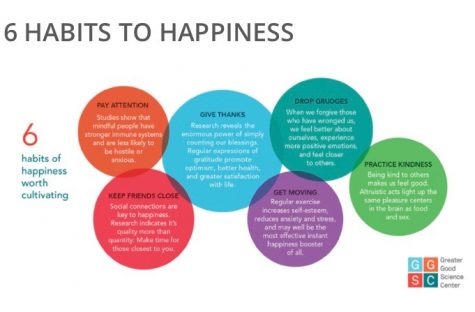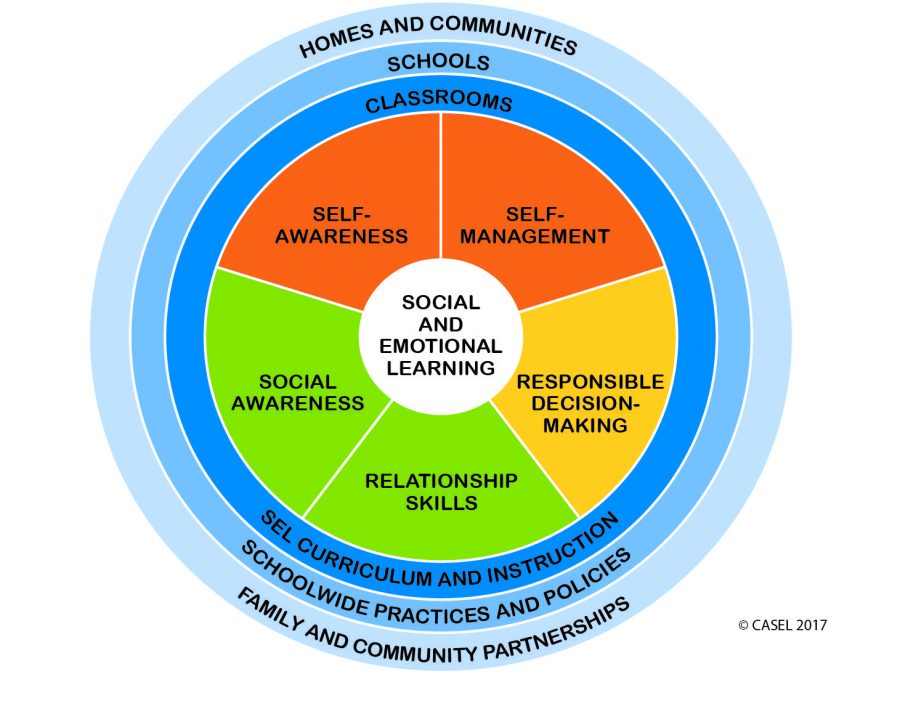Social Emotional Learning: Future of Education
With self-awareness, self-management, responsible decision making, relationship skills and social awareness, SEL is used in communities, homes and schools. SEL has been the core of all aspects of functioning societies.
Mar 15, 2019
Schools around the nation are putting aside the textbooks and undertaking a new way of teaching students in the classroom. This new way of learning is intended for students to be self-aware of their emotions when navigating through the real world.
Human emotions and social interactions are said to determine how successful one will be in life. Utilizing social and emotional learning (SEL) is crucial to a child’s development, as it corresponds to a fulfilled and stable life as an adult. Educators are implementing these core ideas to teach and assess social and emotional skills within students.
In fact, here at Sage Creek, the staff and counseling department are working to administer SEL through a revised teaching curriculum. Megan Corazza is currently applying the themes of SEL to our campus through her role as Counseling Department Chair.
“In our counseling curriculum, we talk about finding balance and reflecting on being successful in the things that you love to do while maintaining academic success,” Corazza said, “We always try and touch on those things when in the classroom setting and during post-secondary planning. Sometimes it’s not as simple as doing a classroom lesson that says to be good at self-management.”

The four counselors and the school psychologist are standing in front of the Sage Creek High School sign. They are a critical part of the staff at SCHS, and they have been working to help every student’s well being.
Corazza not only educates students about the new learning reformation, but she also created ways to incorporate the concept of SEL into the day-to-day lives of students at Sage Creek.
“We implemented the mindfulness center this year as a means of getting students to relax and kind of reset to get back to class. We want to include and infuse [SEL] in everything we do, whether it’s the individual interactions with the teachers in the classrooms, supporting students or the classroom sessions that we host,” Corazza said, “It’s a new philosophy that I’m crazy excited about as a counselor.”
Psychology teacher Brian Co address why SEL is crucial in the school curriculum and how these lessons will be used in a students’ entire life.
“As young people get to experience life, they get more problems thrown their way and they learn how to deal with those problems. We are preparing kids for life after high school. A lot of the kids here are under a ton of pressure to go to college. And in college, this stress level just increases a whole bunch more,” Co said, “Sometimes kids aren’t aware of social-emotional learning and then they learn it in schools; it kind of gives them two different perspectives, the academic and then just the life experience which is important.”
Co describes that learning these social skills can be applied to a variety of situations and how they are critical to stopping unmanageable behavior.

The Counseling Department is utilizing this “6 Habits to Happiness” chart to demonstrate Social Emotional Learning. They displayed this flyer over campus for students to use as a resource.
“If you have a friend who is crying because they got a bad grade on a test or they get a headache or they’re stressed or they have anxiety, those things are not the problems themselves; those are symptoms of a problem. So they don’t know how to deal with that in a healthy way,” Co said, “Often times it turns into ‘I get mad and I punched the wall’ or ‘I yell at my friends’ or ‘I don’t want to go to school,’ or worse, it turns into something like physically harm[ing] somebody or bully[ing] somebody. If people start thinking about those as symptoms of a problem and not the actual problem which is something deeper than that, then they can start to fix it.”
School psychologist Bob Boeckman reveals the impact SEL has on the mental well being of an adolescent undergoing today’s educational system.
“It encompasses more of a holistic approach. Instead of just looking at the A-G requirements and going to college, it looks more at the student’s total well being,” Boeckman said, “It teaches students in becoming more well rounded, learning empathy and how to show empathy. I think it has a lasting effect on their mental health and mental wellness overall.”
Co reaffirms, “The problem in that is not all kids handle problems in the most healthy way, so that’s kind of where we try and fill the gaps in terms of mental health.”








jimmy summerville ◊ Apr 6, 2020 at 5:51 am
Congratulations on the success you are having with SEL at your school. Keep the good work up!
Deb Merrow ◊ Nov 21, 2019 at 3:46 pm
In order to make it work, the entire school has to buy into SAL. If they do, what a payoff. Students who can become frustrated with learning, be able to identify the frustration, then adjust their behavior to fix the problem will be so much further ahead when they get into the real world. It will create work places where people listen to each other and work together on projects without becoming angry or hostile.